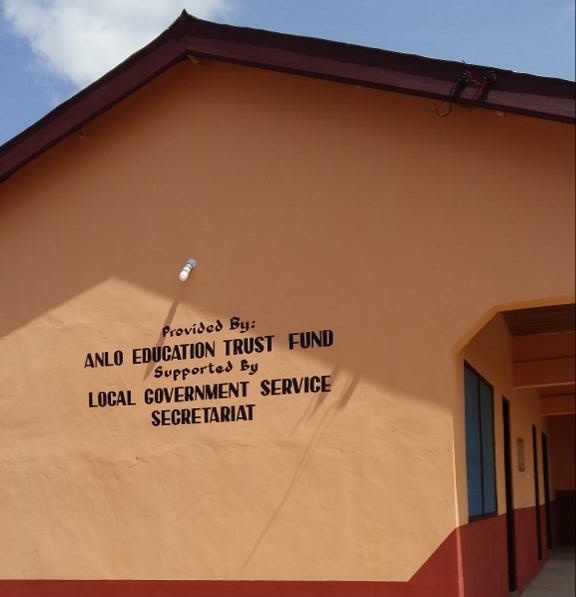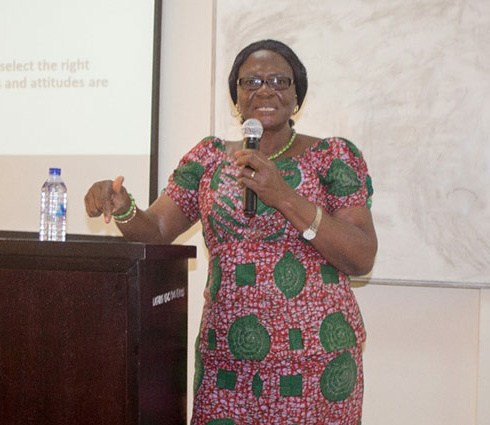AETF History
The Anlo Education Trust Fund was established in November 2009, to support improvement in educational attainment in the Anlo traditional area. Some of the achievements are:
The enclave known as Anlo comprises traditional areas stretching from Ave-Dakpa in the middle belt of the Southern Sector of the Volta Region of Ghana, through Akatsi, to Agbozume, Dzodze, and the whole of the Coastal belt stretching from Aflao in the easternmost part of Ghana to Anyanui in the western part of Keta and all other towns on both sides of the Keta Lagoon. Anloga is the traditional capital of all the Anlo people.

Background
For over 600 years, apart from the Ada and Songhor areas, the Anlo area had been the safest and ‘richest enclave’ providing salt to most communities in the then Gold Coast, now Ghana. It also provided most communities in Ghana with fish, especially anchovies and sardines which were nick-named ‘Keta school boys’ because of their abundance in the Keta area and the then buoyant Keta market serving as the main supply center.
Before the introduction of the Western style of education in 1783, the people of Anlo were engaged in trading, fishing, and farming. However, since 1783 the people of Anlo took to education and by so doing produced critical manpower for the Gold Coast/Ghana Civil Service, Military, Police, and other State agencies. The Anlos, whose honesty was proverbial, at that time, were the toast of foreign employers and businessmen. The best teachers came from the Anlo traditional area and their penchant for quality has never been compromised. They were therefore in high demand throughout Ghana. Indeed, the Anlos always say ‘Education is our Cocoa’. Therefore, parents as well as teachers paid a special attention to education.
When Ghana started having the ripple effect of worsening economic conditions from the 1990s, the social, cultural, economic, and political conditions of the Anlos tottered. Job avenues dried up. Fishing and farming, which had provided most of the jobs dwindled because of environmental and man-made causes.
In the 1960s and the 1990s and even now, the Atlantic Ocean inundated and destroyed most of the coastal lands. The high tides of the sea made fishing expeditions hazardous. With most of the land gone into the sea and with the depleting fish stock and farming no longer being lucrative, most of the people migrated outside the Anlo traditional area.
A combination of the factors mentioned above led to a sharp decline in the academic standards in both basic and second-cycle educational institutions. Increasing poverty levels of parents coupled with declining livelihoods in the Traditional Areas have made it difficult for most parents to fund their children’s education beyond the Basic Education level. Fees paid in Second Cycle and Tertiary Institutions have more than doubled over the past decade. The increased financial burden on parents and students has resulted in decreased Gross Enrolment Rates (GER) and decreased retention of students at higher levels of education. Fortunately, the Fee Free Senior High School Education policy has seemingly reduced the burden on parents, albeit not completely.
Teaching and learning aids, textbooks as well as other teaching facilities and equipment are largely insufficient in most schools in the Traditional Area. Education infrastructure has also deteriorated in most basic and senior high schools. This coupled with a lack of residential accommodation and poor teacher incentives are factors that have made it difficult to attract a high caliber of teachers to educational institutions in the Traditional Area. This situation has resulted in increased desperation of parents and students to secure financial assistance from wherever possible. Members of Parliament and District/ Municipal Assemblies within the Anlo Traditional Area are pressurized to sponsor students. In some cases, children must work in very hazardous circumstances in order to look after themselves both at school and at home. Most worrying is the fact that brilliant students with poor parents are losing out on opportunities for higher education. No doubt, the Anlo traditional area will be the greatest loser in the end.
To contribute to addressing the challenges mentioned above, the AETF was established to work to improve the educational performance of the youth of Anlo State.
To raise funds to support the improvement of educational. attainment of children in Anlo land through commitment, and selfless dedication.
To ensure every Anlo child has access to quality education to the highest. level attainable.
To raise one million cedis (GH¢ 1,000,000.00) in every five years to undertake various projects, including scholarship for brilliant but needy students at all levels of the educational ladder.
who we are
Business
consulting

Vivamus dictum semper efficitur. Morbi pulvinar viverra rutrum. Morbi pretium consequat eros. Sed aliquet tincidunt commodo. Etiam facilisis neque at metus hendrerit congue.
who we are
Meet the Leadership
our specialty
Innovative business
startup ideas
Lorem ipsum dolor sit amet, consectetur adipisicing elit, sed do eiusmod tempor incididunt ut labore et dolore magna aliqua. Ut enim ad minim veniam, quis nostrud exercitation ullamco laboris nisi ut aliquip ex ea commodo consequat.
Duis aute irure dolor in reprehenderit in voluptate velit esse cillum dolore eu fugiat nulla pariatur.





